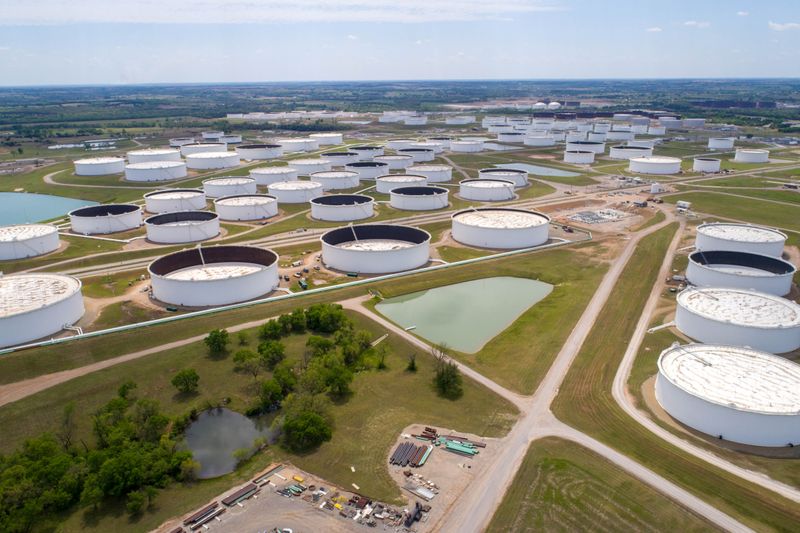NEW YORK (Reuters) – Oil prices were little changed on Wednesday, despite a massive drawdown in U.S. crude inventories, as ongoing concerns about the coronavirus pandemic tempered buying interest.
U.S. crude oil stocks dropped by nearly 10 million barrels last week to their lowest levels since March, surprising the market, which was looking for a modest increase in stocks. [EIA/S]
“The market was led up by a significant draw in crude oil as the refining industry continues to turn the crude oil surplus into refined products,” said Andrew Lipow, president Lipow Oil Associates in Houston.
U.S. West Texas Intermediate (WTI) crude futures settled at $52.85 a barrel, rising 24 cents, while global benchmark Brent crude futures fell 10cents to end at $55.81 a barrel.
Also helping oil was the U.S. Federal Reserve’s decision to stick to its dovish tone and leave its key overnight interest rate near zero to maintain monetary support until there is a stronger rebound from the pandemic-triggered recession.
The rising number of global coronavirus cases, which has surpassed 100 million as infections surge in Europe and the Americas, while Asia scrambles to contain fresh outbreaks, weighed on prices.
“Demand concerns should remain with us for some time,” Eugen Weinberg of Commerzbank said.
China, the second-largest oil consumer, has recently seen a coronavirus resurgence. Official Chinese data showed 75 new confirmed cases of COVID-19 on Wednesday, the lowest daily rise since Jan. 11.
Analysts said prices could benefit from lower U.S. oil production as a result of stricter industry regulations by the Biden administration, which on Wednesday paused new oil and gas leases on federal land and cut fossil fuel subsidies as he pursues green policies.
“We’re going to be watching these production numbers to see if U.S. oil producers can overcome a tougher regulatory environment and a tougher funding environment and raise output,” said Phil Flynn, senior analyst at Price Futures Group in Chicago.
(Additional reporting by Alex Lawler in London, Roslan Khasawneh in Singapore, Sonali Paul in Melbourne and Scott DiSavino in New York; Editing by Marguerita Choy and Alexander Smith)


























